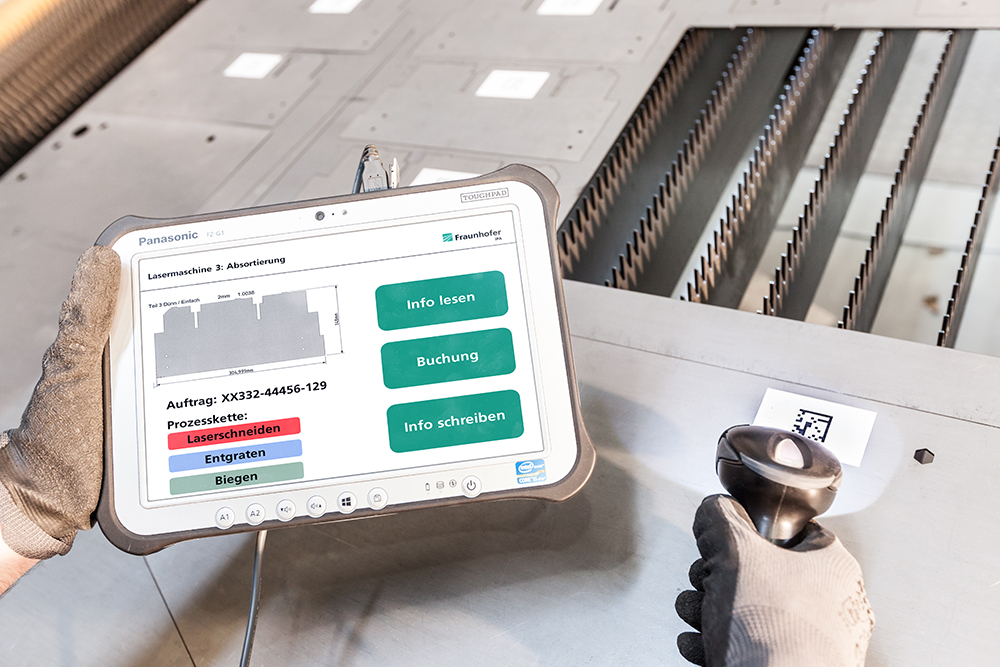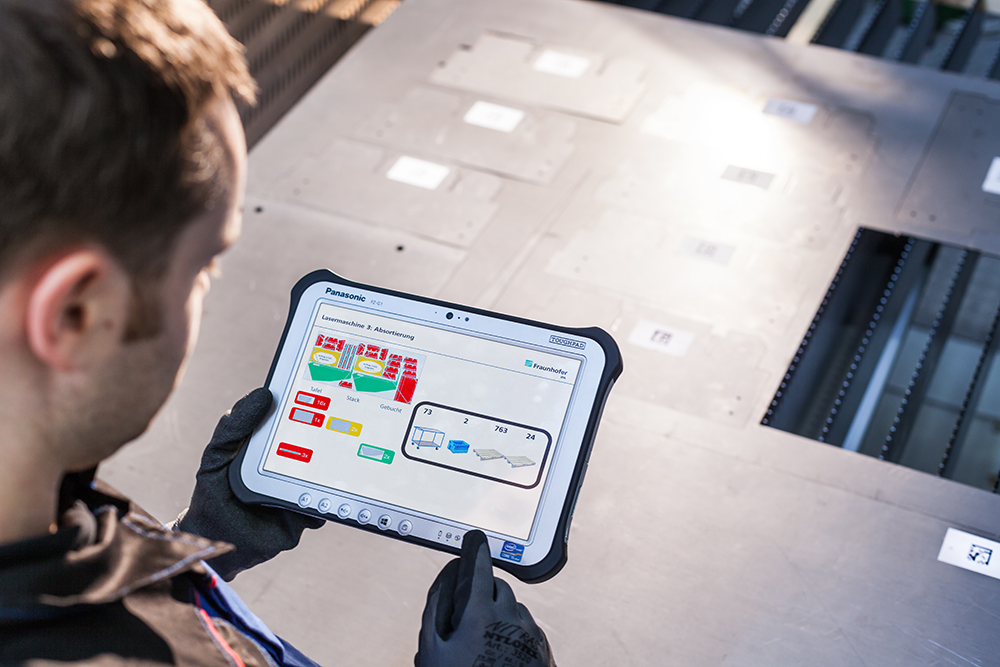
Success stories

From stand-alone solutions to networked production.
Collecting orders and components, bringing materials to the production line and transporting parts - such indirect processes in sheet metal processing are time-consuming and large amounts of resources. With Industrie 4.0, savings can be made. In a study, the Trumpf company and Fraunhofer IPA analyzed processes to find out where there is room for improvement.
Up until a few years ago, times per part were the main issue in industrial sheet metal processing. A company’s decision to buy a machine or not mainly depended on processing times. These days, most machines are equipped with highly-efficient technologies, such as lasers. These operate at such a speed that upstream and downstream processes are unable to keep up.
To make sheet metal processing more efficient with the aid of Industrie 4.0 technologies, Trumpf embarked on a long-term project with Fraunhofer IPA in 2015 titled “Flexible sheet metal processing lab”. The solutions developed will be implemented at Trumpf and marketed by them under the term “TruConnect”. Among other things, the partners conducted a study to determine the advantages of digital applications.
The study showed: Industrie 4.0 is capable of halving throughput times
During the research project, scientists from IPA, together with Trumpf employees and the student consulting company Emendo, visited 25 Trumpf customers from the sheet metal processing industry. They investigated each work step based on lean criteria and used value stream analyses and other means to identify areas where resources are wasted. After analyzing the processes, the IPA research scientists constructed a demonstration workplace in their “Application Center Industrie 4.0” to model reality in most of the sheet metal processing companies. The aim was to test Industrie 4.0 solutions and compare them with the status quo.
The resulting comparison confirmed the effectiveness of the applications. “Depending on the situation at the customer’s, we achieved time savings of between 28 and 51 percent on each order”, remarks the project manager Ulrich Schneider happily. This potential is even higher with some processes. When collecting materials for an order, i.e. commissioning, a time saving of 85 percent can be attained. The optimized solution is also able to locate sheet metal components up to 42 percent faster. New technologies used to sort parts at the laser cutting machine need 48 percent less time than the docket alternative. In addition to the time-saving aspect, the Industrie 4.0 solutions also score on results. “For example, by sorting with automated parts recognition and booking, failure rates can be reduced from an average of 1.5 percent to zero,” says Schneider. This avoids overproduction, which had been manufactured deliberatedly in the past to compensate losses.

